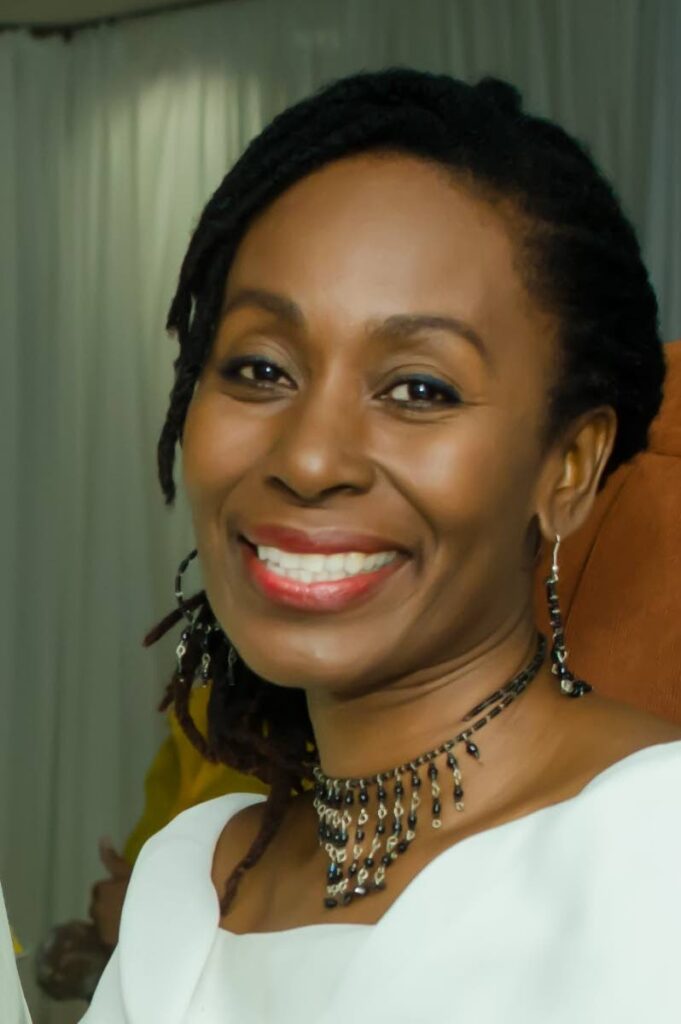For the love of mas

Culture Matters
Carnival Love
DARA E HEALY
67 is the season
Every man in the band
Will be hugging up they gyal
They romancing
While they jumping
This is real bacchanal
– 67 Carnival, Lord Kitchener
THE WONDERMENT and fantasy of the costumes. The magic of the materials – velvet, satin, aluminum and yes, even the feathers. The rustle of strips of fabric and the sound of feet chipping through the streets or pounding the Savannah stage. Allyson Hennessy’s voice describing the portrayals during the Parade of the Bands or Dimanche Gras. The bits and pieces of throw-away costumes that I would treasure; the euphoric expressions of joy on the faces of the masqueraders. Allyson Brown floating across the stage in Peter Miscall’s mesmerizing queen costume, Joy to the World.
When I think about the masquerade, the parade of costumes, these are the flashes of memory that flood in.
As we continue on our quest to highlight love through the TT Carnival, our focus shifts to the masquerade on Carnival Tuesday. “Tuesday is a day of real spectacle. Today you can be anything you want to be; a devil, a god or anything that takes your fancy.”
From around 1900, the type of band began to shift. After emancipation, the taboo-bamboo bands and groups playing biscuit tins and other percussive instruments expanded to costumes inspired by what was happening in society at the time, political commentary and traditional masquerades.
For instance, footage from mas in the 1920s shows sailors as well as depictions of devils and bats. As the 20th century unfolded, more structure was introduced into the masquerade. In particular, we see for the first time the formation of “costumed bands, each with a distinctive banner, bearing a title and motto.”
Over the decades, the bands grew increasingly sophisticated, drawing their themes from history and global politics. It was the norm to hear grand-sounding names such as Rulers of Persia, Vanquished Splendour of Russia or Relics of Egypt. A pre-independence documentary on Carnival noted that “in their quest for authenticity, Carnival bandleaders become avid students of research.” Bandleaders would spend hours researching their topic, paying attention to every detail, pouring every effort and love into their creations.
In the early days, the steelband and brass were integral to the masquerade, providing the soundtrack to the bands as they paraded through the streets on Carnival Tuesday. In the early decades, countless bleachers would be constructed around the city to accommodate the large amount of spectators. By the 1970s, more people moved from the bleachers into the masquerade instead.
The sheer size of the bands caused another shift in the ritual. Errol Hill recalls that in 1971, Irvin McWilliams’s Wonders of Buccoo Reef had 1,400 members and 28 sections. In 1978 his band Know Your Country had 3,500 people and in 1980, The Rains Came, 4,500. The steelband music format could not be sustained with the larger size of band. And, as we know, our love affair with brass eventually faded.
Designers continued to influence how mas looked and how we displayed it. Costumes grew larger and more shiny. However, Minshall pushed the boundaries of interpretation, forever changing mas portrayal with his emphasis on storytelling and theatre. He also experimented with the form and structure of the mas, exploring ways to bring meaning and depth into the masquerade through movement, choreography and manipulation of colour.
“
Play the music and breakaway/Play the music Carnival Day/Spread yuh hand and break away...Put yuh hand in the air!” By the 80s and 90s, women dominated the streets. The demure costumes of previous years, now overtly sexy and decidedly smaller. A newer, less ideological approach to the mas crept in, colliding with the intoxicatingly simple and sexual soca music.
“
Smokey Jo play a big time mas/Purple velvet and shining brass/He ride through town on a golden throne/King ah the road in a world of his own/He work all night and day as the weeks went past/Pounding and beating on metal for fancy mas.”
The spirit of Uncle Andre was strong as I wrote this. Perhaps, in the stillness of the street parade, he would like us to remember him? Maybe he would like us to allow his music to bless the version of mas that emerges next? Did he whisper, will we teach the children to wire-bend, stilt-walk and make mas to sustain and enrich our communities?
I look forward to answering his questions and making new memories. I look forward to once again seeing us make creative love through our mas.
Dara E Healy is a performance artist and founder of the Indigenous Creative Arts Network – ICAN


Comments
"For the love of mas"